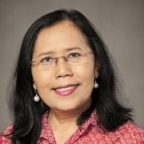This study aims to investigate the relationship between COVID-19 pandemic lockdowns and the air quality at major cities in 13 countries within the Monsoon Asia region. Changes in major air pollutants such as particulate matter (PM), nitrogen oxides (NOx), sulphur dioxide (SO2), carbon monoxide (CO) and ozone (O3) for all the countries involved will be assessed and compared using available satellite and ground-level data. The number of COVID-19 cases in major cities in the selected countries will be collected via relevant agencies that monitor the number of COVID-19 cases in each country. Temporal changes in concentrations of criteria airborne pollutants prior, during and post COVID-19 lockdowns will be examined. Other concurrent factors affecting the resultant amounts of air pollutants such as changes in the number of motor vehicles, industrial emissions and weather will be investigated. Concurrent with data evaluation, this study will build interactions with policymakers and stakeholders to engage their needs and interests in the association between COVID-19 effects and the resultant air quality. The proposed studies are expected to generate cross-country comparisons in air quality and associated dominant factors during the pandemic lockdowns, as well as to enhance country-dependent science-policy interactions.
Project leader
Prof Dr Abdus Salam, IGAC Project Co-Chair
“This APN project has brought together researchers from the Monsoon Asia and Oceania Networking Group (IGAC-Mango) and contributed to the knowledge on air quality assessment during the COVID-19 pandemic in this region.”
Prof Dr Mohd Talib Latif, Universiti Kebangsaan Malaysia, MALAYSIA
“This APN project has encouraged early career scientists to find alternative methods for determining air quality in this region through collaboration and training by trainers from NASA and EUMETSAT.”
Dr. Murnira Othman, Universiti Kebangsaan Malaysia, MALAYSIA
“The APN projects have successfully gathered several members from various countries in the Monsoon Asia region to facilitate policy making on reducing air pollutant concentrations in this region. Many interesting activities have been performed, including the participation of young scientists for capacity building and table discussions between scientists and policymakers. In summary, this project has provided a scientific approach to reducing air pollution and strengthening collaboration for countries in the Asian Monsoon region.”
















